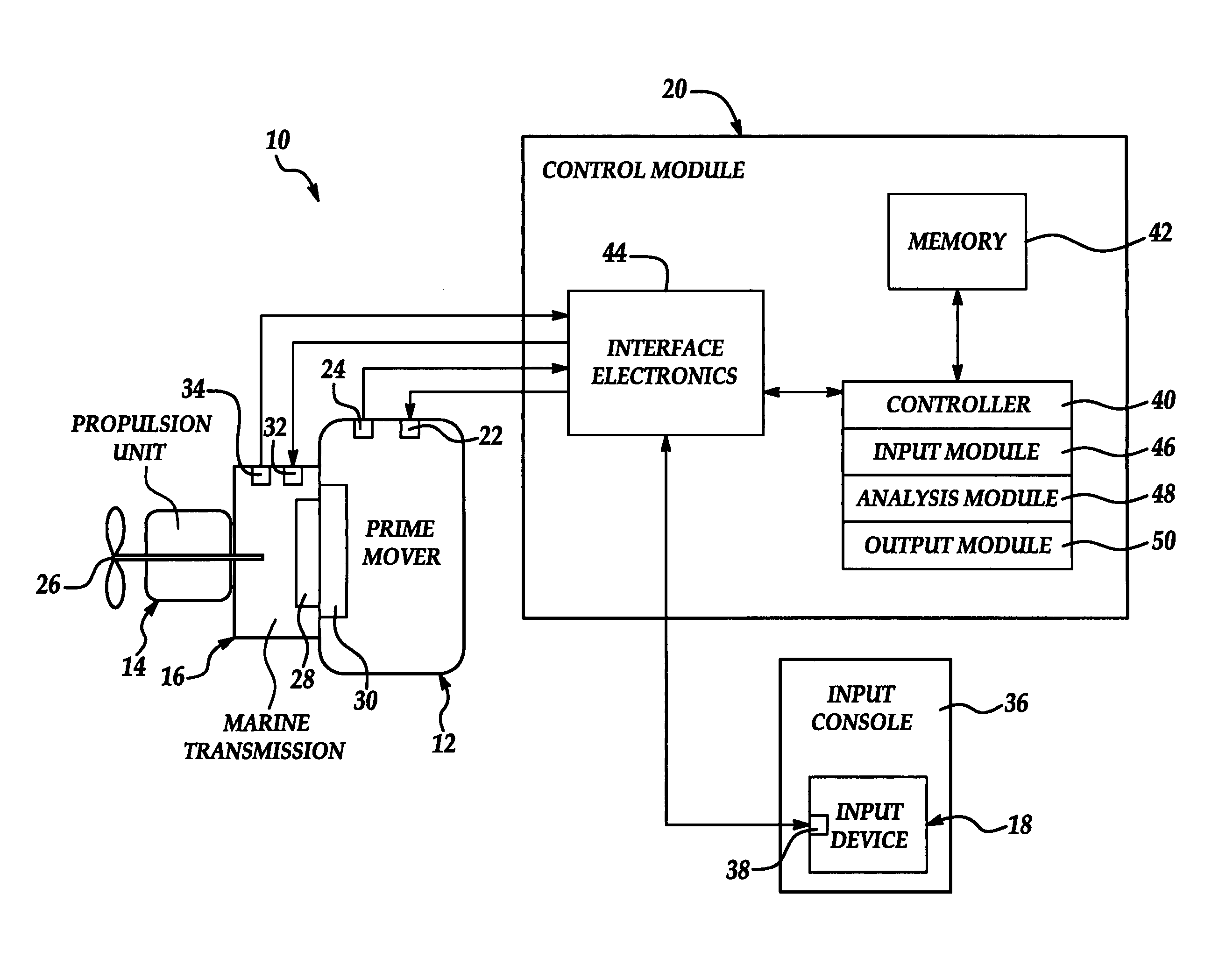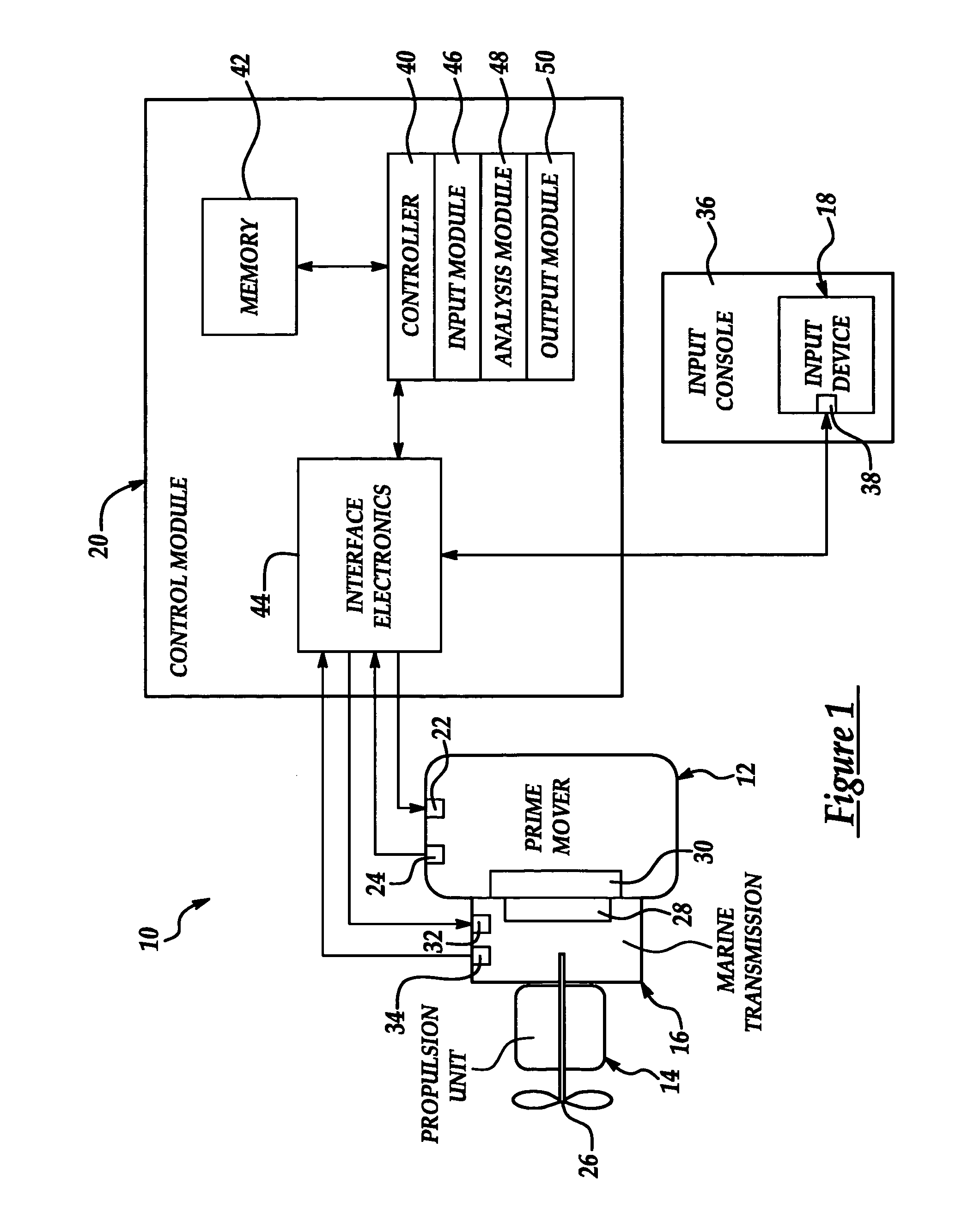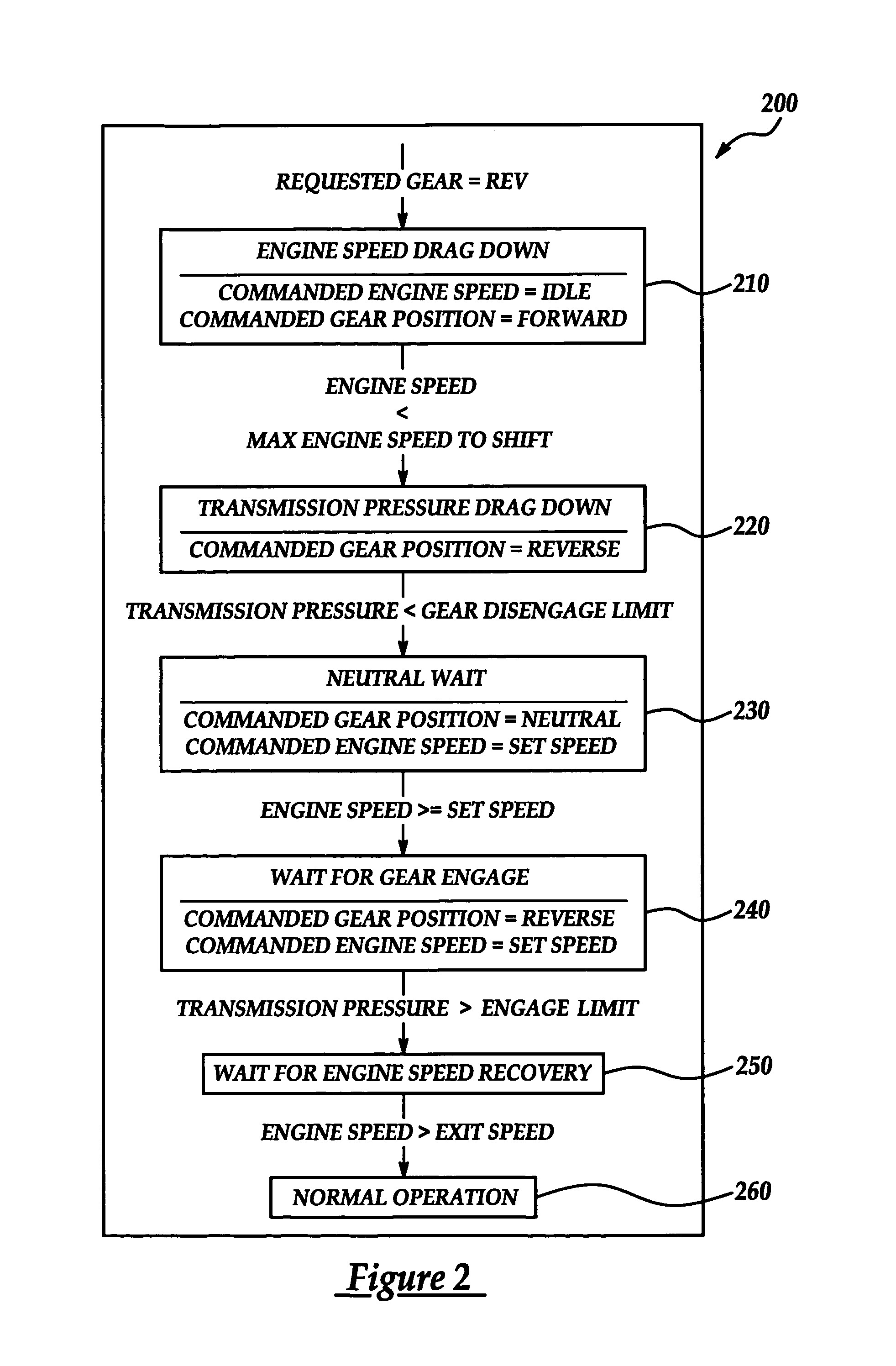Marine propulsion shift control
a shift control and propulsion technology, applied in marine propulsion, propulsive elements, vessel construction, etc., can solve the problems of engine stall, sudden increase in engine load, engine stall, etc., to avoid engine stall, reduce clutch wear, the effect of reducing the effect of wear
- Summary
- Abstract
- Description
- Claims
- Application Information
AI Technical Summary
Benefits of technology
Problems solved by technology
Method used
Image
Examples
Embodiment Construction
[0014]FIG. 1 illustrates a block diagram of a marine propulsion system 10 according to an embodiment of the present invention. The marine propulsion system 10 generally resides within a marine vessel (not shown) and includes the following main elements: a prime mover (engine) 12 for powering the vessel, a propulsion unit 14 for propelling the vessel, a marine transmission 16 for converting the output of the engine 12 into an input to the propulsion unit 14, a throttle control lever 18 or other manual input device used by the pilot to control transmission shifting and engine speed, and a control module 20 for controlling the engine 12 and transmission 16 in response to the manual input from the pilot.
[0015]The engine 12 is mounted to the vessel as is well-known in the art and, as used herein, the term “engine” means an internal combustion engine, a turbine engine, electric motor, and the like. For example, an internal combustion engine provides rotational power from a crankshaft (not...
PUM
 Login to View More
Login to View More Abstract
Description
Claims
Application Information
 Login to View More
Login to View More - R&D
- Intellectual Property
- Life Sciences
- Materials
- Tech Scout
- Unparalleled Data Quality
- Higher Quality Content
- 60% Fewer Hallucinations
Browse by: Latest US Patents, China's latest patents, Technical Efficacy Thesaurus, Application Domain, Technology Topic, Popular Technical Reports.
© 2025 PatSnap. All rights reserved.Legal|Privacy policy|Modern Slavery Act Transparency Statement|Sitemap|About US| Contact US: help@patsnap.com



